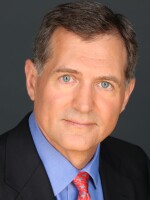DAVID GREENE, HOST:
The Trump administration spells out its thinking today on what U.S. nuclear forces should look like and also how our country's nuclear weapons might be used. This document is formally called the Nuclear Posture Review, and NPR's Greg Myre is in our studios in Washington. And Greg, you actually have a draft of this thing in your hands, right?
GREG MYRE, BYLINE: I do indeed, David.
GREENE: So what's in it?
MYRE: Well, the main focus is upgrading and modernizing the nuclear arsenal. Much of it dates to the Cold War. It's been around much longer than was anticipated. The very first graph says it is not possible to delay modernization of our nuclear forces. The last review like this was under President Obama in 2010. He ultimately supported a big modernization, looking at 30 years and a trillion dollars. When Trump came into office a year ago, after one week, he ordered up this new review. It's been produced by the Pentagon with help and input from the military, intelligence community, State Department, Department of Energy. So it's a very big and serious document.
GREENE: OK. So it's sort of an evolution from one president to the next. But if I can, Greg, I want to play a little bit of President Trump from the State of the Union address earlier this week.
(SOUNDBITE OF 2018 STATE OF THE UNION ADDRESS)
PRESIDENT DONALD TRUMP: We must modernize and rebuild our nuclear arsenal, hopefully never having to use it, but making it so strong and so powerful that it will deter any acts of aggression by any other nation or anyone else.
GREENE: So he's taken it to another question. It's not just modernizing but the question of, like, how and whether to use these weapons. Does this document start to give us some hints about his thinking?
MYRE: It does. And this is already the subject of a robust debate. The very traditional U.S. policy is that nukes would only be used under extreme circumstances. But different presidents and administrations can define this differently. And this talks about a tailored, flexible strategy. And it gets into describing non-nuclear attacks on the United States and whether or not that might merit a nuclear response. It talks about big attacks on civilians or infrastructure or the power grid. And so this is the point, I think, that a lot of people are starting to pick up on and really focus.
GREENE: Yeah. I mean, that's a big deal if you start talking about using nukes to respond to non-nuclear attacks. I mean, that's no small thing.
MYRE: Oh, absolutely not. And also talking about a new type of nuclear weapon - a small, very low-yield device - saying it's needed to counter Russia, which is working on something like this. And again, this is - I think - will be a second point of real contention as to whether the U.S. needs a new weapon in a sense to - a new, small weapon to deal with Russia.
GREENE: Oh, so actually naming potential enemies. The report actually names Russia as a potential enemy. Are there others on the list?
MYRE: That's right. It talks about China's modernization. It talks about North Korea - which we've certainly heard about - and Iran. But in the context of it, it does note that Iran has this nuclear deal. And it doesn't suggest that Iran is about to break out of the nuclear deal.
GREENE: NPR national security correspondent Greg Myre.
Greg, thanks.
MYRE: Thank you, David. Transcript provided by NPR, Copyright NPR.



